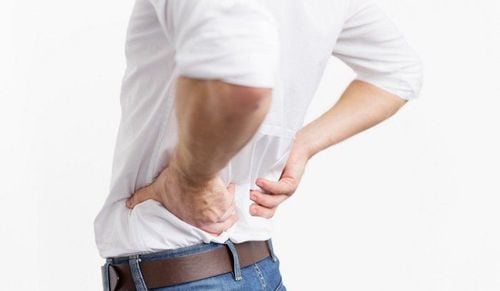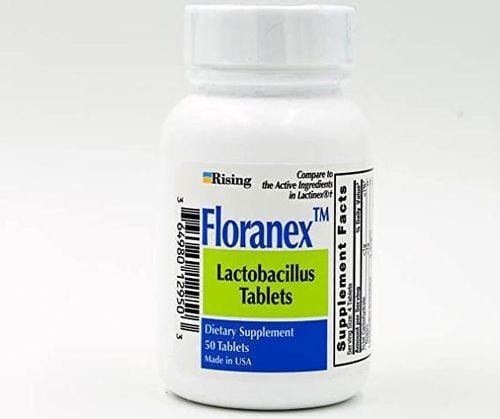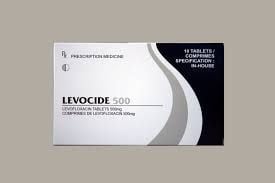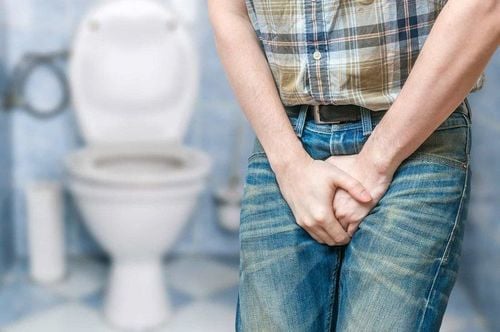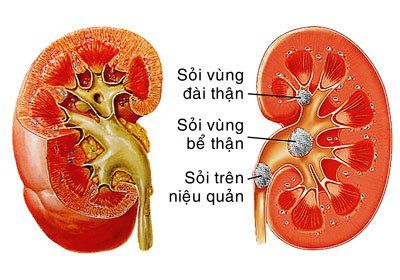This is an automatically translated article.
The article is professionally consulted by Master, Doctor Vo Thien Ngon - Urologist - Department of General Surgery - Vinmec Danang International General Hospital.Endoscopic extracorporeal lithotripsy (ESWL) is a surgical treatment for urinary stones. This method is commonly used in the treatment of urinary stones today, it has many advantages, but still has certain limitations.
1. What is extracorporeal lithotripsy (ESWL)?
Extracorporeal lithotripsy is the most effective and gentle surgical treatment for urinary stones today. The essence of this method is to use shock waves to break the stone, then the debris will be excreted in the urine.
Extracorporeal lithotripsy is a common method in the treatment of urinary stones. Most medical facilities can do it. When urolithiasis is a common and recurrent disease, especially in our country, the rate of urolithiasis accounts for 30-40% of patients with urological diseases, the introduction of this method has contribute to making the treatment of urinary stones more convenient.
2. In which cases is indicated for extracorporeal lithotripsy?
Indications for extracorporeal lithotripsy must be based on the integrated analysis of many factors such as:
Through tests. Diagnostic imaging of the size, location of the stone, the patency of the urinary tract, whether there are anatomical abnormalities or not. Body index. Renal function . Urinary tract infection. Therefore, do not abuse the indications for extracorporeal lithotripsy to avoid possible unfortunate complications. The specific indications of extracorporeal lithotripsy are:
Apply to kidney stones <15mm in size. Apply to ureteral stones with size from 6-25mm. Applied to ureteral stones < 5mm in size when medical treatment for 1 week does not improve, stones do not move to lower positions, stones on ureteral strictures or stones on polyps. Ureteral stone on the site of ureteral prolapse. Contraindicated in the following cases :
Patients with urethral stricture in men . The patient had narrowing of the ureter in the long segment below the stone. The patient has a bleeding disorder. Patients with severe urinary tract infections: in this case, it is necessary to treat the infection and then dissolve the stone.
3. The process of performing extracorporeal lithotripsy
The extracorporeal lithotripsy procedure is performed as follows:
Step 1: The patient lies on the lithotripsy machine, the doctor conducts general anesthesia or analgesia. Step 2: The patient's back corresponding to the position of the stone is placed in contact with the shadow of the shock wave source. Step 3: Under the positioning of the X-ray, the doctor will adjust the shock wave to precisely focus on the stone, then pulse to disperse the stone. Time for each lithotripsy is about 1 hour.
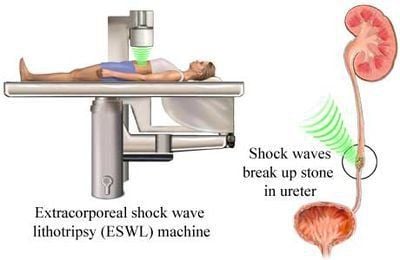
Notes when performing extracorporeal lithotripsy:
On average, each treatment course only uses 3,000 or less shockwave pulses, to ensure safety for the renal parenchyma and at the same time to disperse the stones. . Because the stone is always moving with breathing, it is necessary to keep breathing deeply and evenly during the lithotripsy process, otherwise the number of times the shock wave does not hit the stone increases, reducing the effectiveness of the treatment. After lithotripsy, the patient needs to drink a lot of water (from 2 liters/day or more) to be able to excrete all the debris of the stone out in the urine. The effectiveness of extracorporeal lithotripsy depends on the following factors:
The solidity of the stone. Capacity of the machine: Low or high capacity of lithotripsy is adjusted by the doctor based on the solidity of the stone, based on the hardness on X-ray or based on the dissolution of the stone during the dissolution process. Location of the stone: Stones in the calyx, renal pelvis are often more fragile than stones in the ureter. Distance from the skin to the stone: As the patient is fat or thin, it will affect the stone dissolution efficiency. The transparency of the urinary tract: Because after being dispersed, the stone debris will be eliminated through the urine, the size of the debris must pass through the lumen of the ureter. With stones located in the subrenal calyx, the elimination capacity also depends on the angle between the renal calyx axis and the renal pelvis axis. The kidney must still be able to excrete urine.
4. Advantages and disadvantages of extracorporeal lithotripsy
4.1 Advantages
Kidney stone lithotripsy outside the body has the advantage of less affecting the kidneys, the functioning of the kidneys is even higher than other methods. Reduce hospital stay and treatment costs for patients. Patients only need to stay in the hospital for 1-2 days to be able to be discharged. This method is not as painful as surgery to remove kidney stones. This method does not require surgery, so there is no need to take care or worry about bleeding or infection of the incision or leaving bad scars. This is a method of treating urinary stones in general and kidney stones in particular with high safety and non-invasiveness.
4.2 Cons
Cannot be applied to the case of large pebbles. The efficiency of lithotripsy is only 55 - 85%. For hard stones or large stones that have not broken completely, it may be necessary to re-broadcast 2-3 times, each time 2 to 3 weeks apart.
5. Possible complications
When treating urolithiasis with extracorporeal lithotripsy (ESWL) there may be some complications such as:
Stone debris obstructs the ureter causing renal colic. Urinary tract infection, causing bacteremia. Hematoma around the kidney. The stone has not broken or has broken but still remains. In this case, other methods such as ureteroscopy, percutaneous renal endoscopy or JJ catheter placement will be used. Extracorporeal lithotripsy (ESWL) is a method of treating kidney stones in particular and urinary stones in general with high safety, shortening hospital stay and saving costs for patients. However, there are still some potential complications and the effectiveness of treatment depends on many factors.
According to BSCKI Le Si Trung (specialist in urology, Vinmec Times City General Hospital), deciding to choose the best treatment method for kidney and ureter stones is not simply based on the patient's stone condition, but also depends on the technique performed by the Doctor and the equipment and machinery at the Hospital. At the same time, for the definitive treatment of urinary stones, early detection and proper treatment will help bring about good and comprehensive results.
At Vinmec International General Hospital, there are modern equipment: An imaging system, a modern flexible endoscopic system with the same qualifications from a team of experienced doctors in lithotripsy can bring Best results limit complications during and after surgery
Modern civilized disease prevention system, comprehensive care, meals, rest, exercise, health education, each room is equipped Comfortable like a 5-star hotel apartment, patient information is confidential
Vinmec's Hybrid operating room is the most modern operating room system in the world today, integrating operating room and imaging diagnostic facilities. Advanced technology (CT scan, MRI, ultrasound...) helps to reduce surgery time and bring the best surgical efficiency to the patient.
In general anesthesia, Vinmec adheres to anesthesia protocols, anesthesia safety guidelines, anesthesia checklists for 100% of surgeries to minimize incidents and unwanted effects.
Please dial HOTLINE for more information or register for an appointment HERE. Download MyVinmec app to make appointments faster and to manage your bookings easily.





